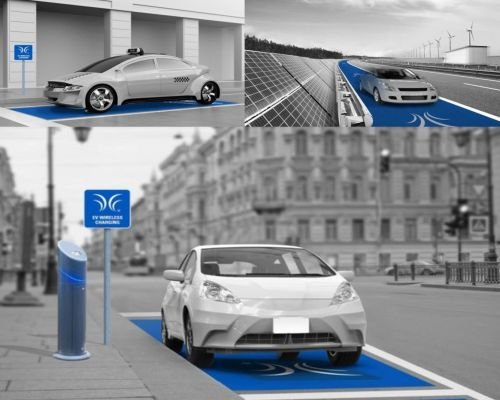Alex Gruzen, the CEO of WiTricity, is as passionate about wireless charging as Elon Musk is about electric cars. Here Alex is busting the five myths about wireless charging that are inaccurate –
Myth #1: Wireless charging is slow and inefficient
False. Wireless EV charging is just as efficient — or more efficient — than plugging in. Most people think they have to plug in an electric car to get the most efficient charging possible, but that’s not true. No charging method is 100% efficient. Conventional chargers are typically 88% to 95% efficient. Wireless charging is right in the middle of that range at 90% to 93% efficiency. That means it does as good a job of transferring electricity from the charger to a car’s battery as most conventional charging equipment that uses a cord.
Myth #2: Wireless Charging Is Not User Friendly
False: Wireless charging delivers a seamless and transparent user experience. There are multiple EV power cord connectors and adapters in use. Figuring out which is the right one to use can be daunting. Wireless charging takes all the stress out of the equation. With wireless charging, there is no need to plug in at home or worry about whether you remembered to connect the car when you arrived home from work.
All a driver needs to do is park above a charging pad, which can be easily installed in a garage or parking lot. The car begins charging immediately.
Myth #3: Wireless Charging Can Leave You Short Of Battery Power
False: Putting gasoline in your car is a reactive activity. While driving around, you notice your gas gauge is creeping toward empty, so you stop at the nearest gas station to fill up. With wireless charging, your car’s battery gets fully recharged while you sleep. It’s like starting every day with a full tank of gas.
For most drivers, overnight charging will provide more than enough range for their daily driving needs. On longer trips, the electricity provided by a wireless charger at home can be supplemented by DC fast chargers located along major transportation routes.
Myth #4: There Are No Universal Wireless Charging Standards.
False: In November 2017, the SAE took a major step toward industry standardization when it announced a worldwide recommended practice specification. This was a big step for companies looking to incorporate wireless EV charging into their vehicles. It also paves the way for wireless EV charging infrastructure to be installed in cities and towns.
The SAE standard is expected to be ratified in 2018 — opening the door for automakers to establish launch dates for their first wireless EV models.
Myth #5: Wireless Charging Detracts From The EV Revolution
False: Wireless charging will be an essential part of the electric car revolution and play a vital role in the development of autonomous cars. While most of the attention today is on sensors, mapping, and machine learning, wireless charging is an equally important technology.
Let’s face it, fleets of robotaxis will not have drivers to plug them in. In the autonomous future, cars will simply park themselves in spots outfitted with wireless charging stations.
Thanks to the new J2954 Wireless Charging Standard created by the SAE, wireless charging will soon be available across countries and across borders.
Sourced from Steve Hanley






